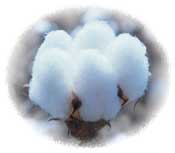HOW TO CHOOSE COTTON FABRICS
Nothing is worse than spotting the *cutest fabric ever* at a fabric shop and when you go to grab it from the shelf it feels similar to sandpaper. Ewwwwww...cheap cotton!
So today we want to talk to you about how to choose cotton fabrics by teaching you how to differentiate between high and low quality cottons. If you have been sewing for awhile, this probably isn't going to teach you too much because at a certain point, you learn to tell whether a fabric has a "good hand" just by touching it. Thankfully, for beginner seamstresses, there are other ways to determine the quality of a cotton and we're going to teach you how now!
The very first thing you should do is look at the label on the bolt of fabric. It is almost always labeled on the very top. It should say "100% Cotton" or something similar. If it is a blend of any kind it may be harder to work with and will probably be harder to wash.
After determining that the fabric is, in fact, 100% cotton, you want to confirm that it is a thick sturdy cotton--particularly, if you plan on sewing children's clothing! You can do this by holding it up to the light. You do NOT want to be able to see much light coming through. It may help to hold a couple fabrics up to the light to compare. If you can make out objects, than the fabric is definitely too thin.
These are the two main "tests" I used to do before I could tell whether a fabric was good enough to use just by just feeling it. There is however another way I read about online, that involves looking closely at the threads that make the fabric. If the threads vary in size and there are irregular gaps (these gaps will be minuscule mind you, not noticeable holes in the fabric) then you are likely dealing with a low-quality fabric.
If you do these steps and still are unable to determine whether or not the fabric is high-quality, I recommend either seeing who made the fabric and whether or not it is a name you recognize as a designer fabric or just asking the opinions of other people there. If there is one thing I know about crafters, its that we LOVE to talk! lol. I have met some very interesting people at my local fabric shops and most people are more than willing to share their knowledge with you.
If you don't have any fabric shops near you and are stuck buying your fabrics online, I suggest sticking with the designer fabrics. It really is the only way to know that you are getting quality fabrics without seeing them in person to decide for yourself..
HAPPY BUYING ..... 

















.jpg)
